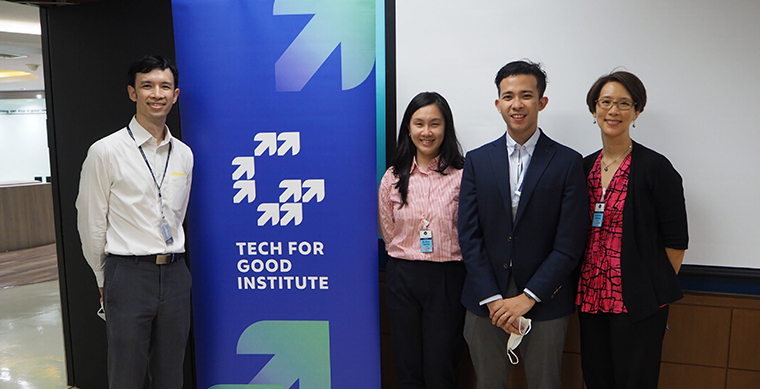
By ASEAN Secretariat
The role and contribution of MSMEs are crucial to support ASEAN’s transition to a more sustainable economy. MSMEs are the backbone of the ASEAN Economy, making up 85% of employment and contributing 44.5% to GDP in the region. MSMEs can support ASEAN Member States (AMS) in their sustainability efforts by reducing carbon emissions from their business activities and developing new products or services that contribute to climate mitigation and adaptation. At the same time, involving MSMEs in national strategies is crucial to prepare them to mitigate the challenges posed by climate change and adapt to the changing market landscape due to shifts in consumer preference and policies in respective AMS to reduce greenhouse gas emissions and transition to a low-carbon economy.
Against this backdrop, the Climate Change Guidelines for Small and Medium-sized Enterprises was endorsed by the ASEAN Committee on Science, Technology, and Innovation (COSTI) on 15 June 2023. The Guidelines were developed through a project led by Thailand Institute of Scientific and Technological Research (TISTR) with support from the ASEAN Secretariat, delivered by The Carbon Trust and Connecting Founders with funding support from Global Affairs Canada through the Canadian Trade and Investment Facility for Development (CTIF).
The guidelines aim to empower SMEs in reducing their own carbon footprint, mitigating their own risk, driving positive change throughout their industry and seizing new opportunities. The guidelines support climate change adaptation and mitigation opportunities for the business sector that actively engage women and have both gender and climate-related targets and milestones.
The Mitigating and Adapting to Climate Change Guidelines for SMEs (hereafter: the guidelines) highlight the various climate risks and opportunities that SMEs should consider in their business planning, and provide tools such as checklists, carbon calculator, and links to other resources that SMEs can tap on to support their preparation in mitigating and adapting to climate change. The specific perspectives, needs and concerns of women-owned businesses have been incorporated to determine priority areas for potential support. The guidelines outline the following step-by-step climate actions on how SMEs can prepare for climate change:
Step 1. Assessing Climate Impacts on SME’s Business
The guidelines propose a set of questions to guide SMEs’ climate impact assessment. The assessment of climate impact includes studying disaster mappings and considering disaster risks in the planning of business operations. It recommends SMEs to include a disaster recovery plan should the business location exist in disaster-prone zones to ensure that the business can continue to operate or resume critical functions if disaster occurs. The recovery plan can include emergency preparedness measures, business continuation and building repair plans, and insurance mechanisms.
Step 2. Reviewing Insurance Policies for Coverage against Physical Impacts of Climate Change
The guidelines suggest SMEs to have adequate coverage to pay for indirect costs of the disaster such as the disruption to business and the cost of repair or rebuilding. Several insurance products that may be suitable for SMEs to insure against the risk of climate change are, among others, (i) property insurance, (ii) business interruption insurance, (iii) flood insurance, and (iv) transportation insurance.
Step 3. Role of the Management as Agent of Change
SMEs are suggested to have a governance mechanism to address climate risk and opportunity which are aligned with its existing risk management and investment management governance approaches.
Step 4. Exploring Technological Solutions to Address Impacts of Climate Change
SMEs can access climate technologies that are widely available in the market while also ensuring that the technologies are commercially viable and proven. Several AMS such as Malaysia and Singapore provide official verifiers’ sources of proven technologies in MyHIJAU Mark Platform and Singapore Green Labelling Scheme Directory respectively. SMEs are also recommended to consider the capital expenditure and the level of disruption brought by the technological investments to their business.
Step 5. Understanding Business Impact on Climate Change
Several AMS have set their carbon reduction targets and have either implemented or are planning to introduce carbon pricing mechanisms which inevitably will also impact SMEs. On this note, SMEs should be equipped with tools to help them understand their organisation’s impact on climate change, such as the amount of greenhouse gas emitted by the business. The Greenhouse Gas (GHG) Protocol provides requirements and guidance for companies preparing a corporate-level GHG emissions inventory. The standard reporting template covers the accounting and reporting of seven greenhouse gases namely: carbon dioxide (CO2), methane (CH4), nitrous oxide (N20), hydrofluorocarbons (HFCs), perfluorocarbons (PFCs), sulphur hexafluoride (SF6), and nitrogen trifluoride (NF3). The GHG emissions can be categorized into three scopes: (Scope 1) direct GHG emissions from owned and controlled sources, (Scope 2) indirect GHG emissions from the generation of purchased utilities, and (Scope 3) indirect GHG emissions that occur in a company’s value chain. A carbon footprint calculator is available on the guidelines’ website to help SMEs estimate their scopes 1 and 2 GHG emission.
The views and recommendations expressed in this article are solely of the author/s and do not necessarily reflect the views and position of the Tech for Good Institute.
This article was first published by the ASEAN Secretariat in their ASEAN for Business Monthly Bulletin in June 2023.
About ASEAN for Business
ASEAN for Business is a bulletin published by the Enterprise and Stakeholder Engagement Division of the ASEAN Secretariat. This monthly bulletin provides quick updates on specific topics related to the ASEAN Economic Community (AEC) for businesses operating in the region.





